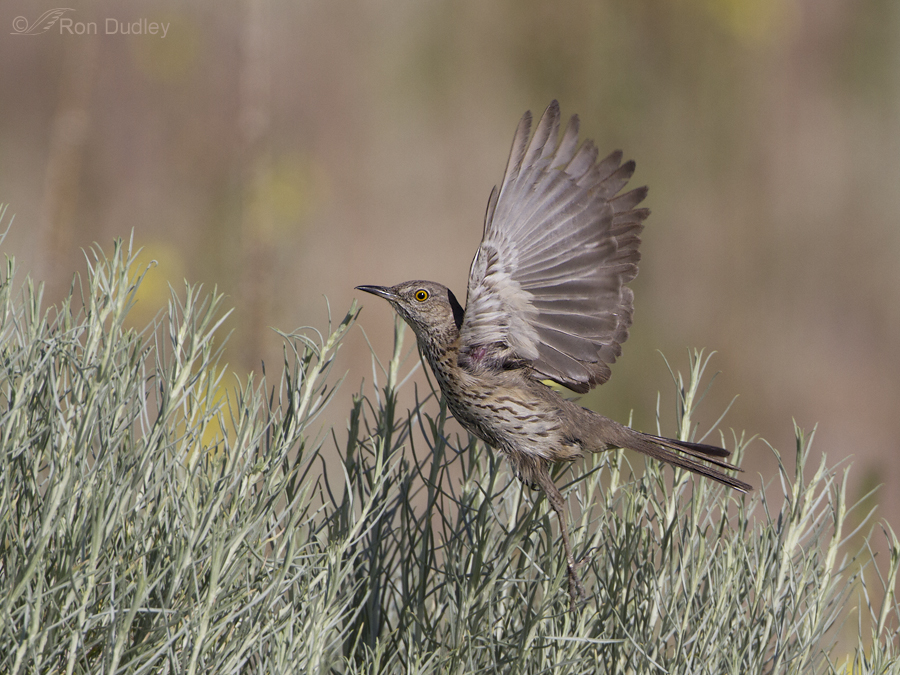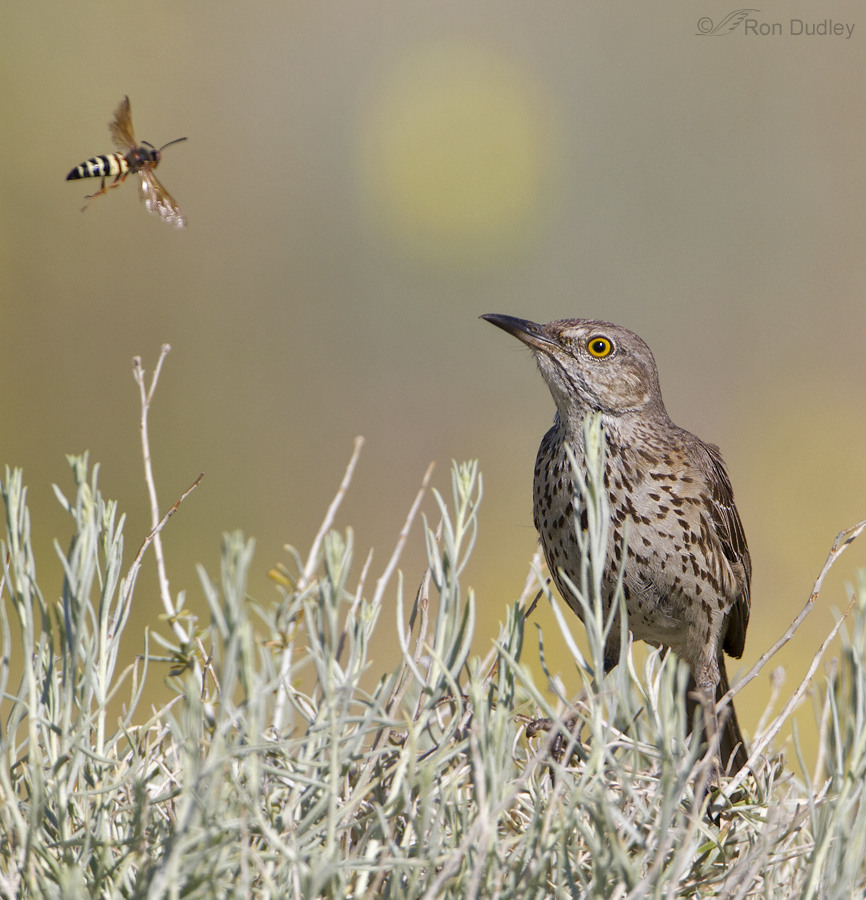Tag: sage thrasher
Sage Thrasher On Rabbitbrush

Though there’s a fair number of Sage Thrashers on Antelope Island they’ve been a difficult quarry for me. Originally called the Mountain Mockingbird, this smallest of the thrasher species is known to be particularly elusive, frequently running on the ground rather than taking flight and their wandering habits during migration have caused them to be poorly studied.
Bill Deformities
I’m seeing more bill deformities “out there” than I used to and that disturbs me. The latest example was a Sage Thrasher we found on Antelope Island four days ago. This is what a normal bill on a Sage Thrasher looks like. Notice that the upper mandible is slightly longer than the lower one with a curved tip at the terminus and that both mandibles fit together tightly showing no evidence of a gap between them. But in this thrasher the upper mandible is significantly shorter than the lower and the curve of the two mandibles doesn’t match so they don’t fit together well, leaving a gap. This is definitely not a temporary, voluntary position of the bill as I have about a dozen shots of the bird over a period of about a minute that show the same thing. The two mandibles never fit together cleanly and the upper one is definitely shorter. With this head turn you can see the other side. I can only imagine how this would interfere with normal preening as the bird attempts to draw the individual feathers through the bill to lock the barbs together. An extreme crop of the previous image. Notice how the back of the mandibles touch each other and prevent the rest of the bill from coming together because their curves don’t match along the entire length of the bill. At first I thought that the end of the lower mandible looked damaged or eroded but perhaps there’s just something on the bill that…
Critters Among the Sunflowers of Antelope Island
Antelope Island is ablaze with color this fall, provided by the common sunflower Helianthus annus. The sunflower display is really quite spectacular this year – the most prolific I’ve ever seen it. I suspect it’s because of the very wet spring we’ve had. The sunflowers can provide a very pleasing setting for wildlife photography, whether the flowers are in focus along with your subject or out of focus to show off some pleasing and unusual color in the background bokeh. Canon 40D @ 72mm, 1/800, f/6.3, ISO 320, EV +0.33 It’s unusual for me to get so close to a pronghorn that I don’t have to use a telephoto lens but these bucks are in rut right now and they’re so intent on herding their harem of females that they’re not nearly so wary of people and vehicles. So I quickly pulled out my old 40D and shot this handsome fella at only 72mm while he was right next to my pickup and staring intently at his ladies close by. This allowed me to keep many of the sunflowers relatively sharp and gave a different “feel” to the image than I usually get with my big glass. Canon 7D, 1/2500, f/5.6, ISO 640, EV + 0.33, 500 f/4, 1.4 tc In contrast to the previous image, this Vesper Sparrow was shot with my 500mm and 1.4 teleconverter (1120mm with the crop factor of the 7D) at f/5.6 which gave me very little depth of field – just enough to get the sparrow sharp but the sunflowers in the background…
The Frustrations of Unnatural Perches
Most bird photographers prefer their subjects to be on natural perches. We are, after all, nature photographers. The definition of just what is “natural” becomes a slippery slope for sure but for my purposes I’ll define a natural perch by exclusion – it does not include buildings, telephone poles and wires, chunks of concrete, signs, or most anything else that is obviously man-made. Now for my exceptions. Some objects that are man-made and have a “rustic” quality are often acceptable. Weathered fence posts, old barns and rusty barbed wire would be examples. One of the major frustrations of bird photographers is to be able to finally get close to a beautiful subject in good light but the bird has chosen an ugly or inappropriate (for us) man-made perch. It is typically very difficult to approach many bird species close enough to get excellent detailed photos, even with big expensive lenses. So it can be aggravating in the extreme to finally get close enough but the bird has chosen an unappealing perch. Some folks choose to largely avoid this problem by shooting at “setups” where the bird has been unnaturally lured into an artificial situation by provided food with attractive perches arranged close by. To many of us this is not nature photography but more like studio or zoo photography. Good bird photography ain’t easy. If it were it wouldn’t be nearly as satisfying when I do finally get the shot I’m after – even though the pursuit has often been frustrating. Below are some of the situations where I’ve been frustrated by these unattractive, unnatural perches. Most bird photographers know…


